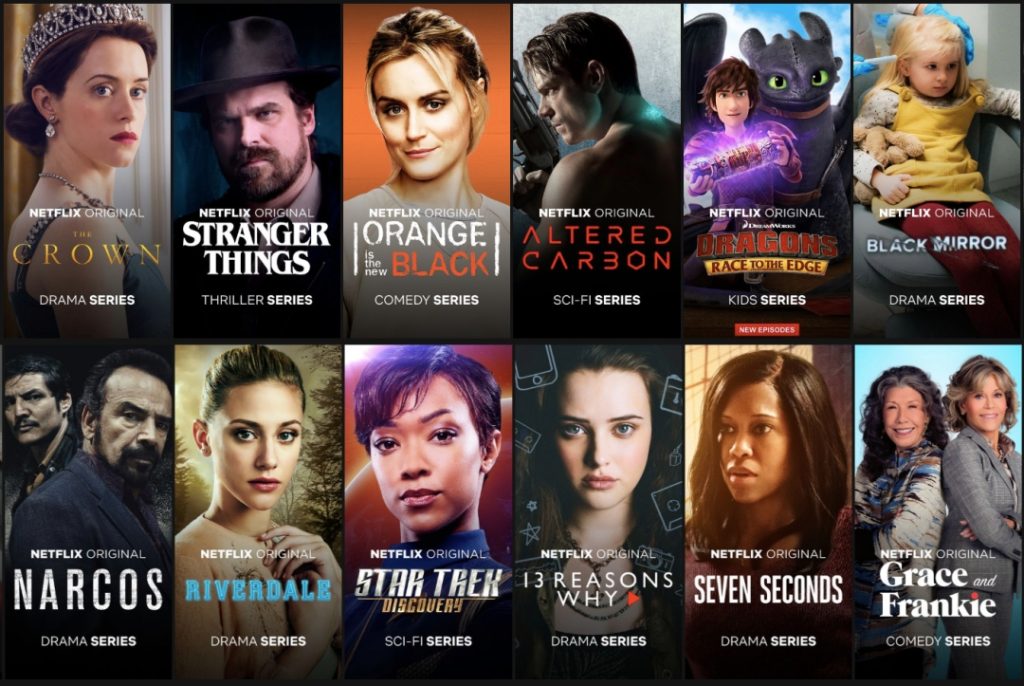Netflix vs Amazon Prime Video: It’s not easy to choose between Amazon Prime and Netflix. After all, an Amazon Prime subscription gives you access to more than just streaming movies and TV; it also comes with a slew of other benefits.
Although Netflix is widely regarded as the original media streaming service, it is far from alone in the industry. There are numerous streaming services available, all competing for your monthly subscription dollars. Amazon Prime Video is one of these services, which begs the question: which service should you get?
If all you care about is which service you should pay for to watch movies and television shows, you can examine the strengths and weaknesses of each platform and reach a decision.
Let’s see who wins the Netflix vs Amazon Prime Video battle!
Netflix vs Amazon Prime Video: Video quality
You have some options when it comes to Netflix and media quality. Netflix offers three subscription tiers, each of which allows you to stream at a different resolution:
- Basic — HD (480p max)
- Standard — Full HD (1080p max)
- Premium — Ultra HD (4K max)
Obviously, the higher the quality of your streaming, the higher the price (more on that later). It should also be noted that only certain Netflix content will be available in 4K resolution.
Amazon Prime is much simpler: your annual Prime subscription fee entitles you to watch any available content at the highest quality possible, which in some cases means 4K resolution.
Both services also support HDR and Dolby Atmos sound quality, assuming your home theater system supports those features. Support for those features is only available with the Premium tier subscription on Netflix.
Netflix vs Amazon Prime Video: Platforms
Nowadays, there are plenty of streaming devices to choose from. You have your standalone devices, such as a Roku or Fire TV, as well as smart TVs with pre-installed apps. There are also laptops, smartphones, and tablets, each of which may have a different operating system as well as different features and limitations.
With this in mind, you want to sign up for a service that is compatible with all of the screens in your life.
Both Netflix and Amazon currently support all major platforms, with apps for the majority of streaming devices as well as specific apps for Android, iOS, Windows, and so on.
If you’re picky, Netflix is available on slightly more devices than Amazon Prime. If you have very specific streaming device requirements, Netflix is likely to be the most dependable option.
Netflix vs Amazon Prime Video: Number of streams
Amazon and Netflix both have limits on the number of concurrent streams you can have on your account at any given time. This prevents you from sharing your account with your extended family or large friend network, though many people continue to do so.
Having said that, the two companies recognize that you may want to watch one stream on your living room TV while your children watch another on the family tablet. As a result, they provide alternatives.
Because Netflix has tiered subscriptions, your concurrent streaming limit increases as you spend more money each month:
- Basic — One stream only
- Standard — Two simultaneous streams
- Premium — Four simultaneous streams
Amazon operates in a unique manner. Each Amazon Prime member has the ability to stream on up to three devices at the same time. You can, however, only stream the same media on two devices at the same time. Netflix does not have this restriction; if you have a Premium tier Netflix subscription, you can stream the same program on four devices at the same time without issue.
Netflix vs Amazon Prime Video: Content
If you’re only going to pay for one streaming service, you should go with the one with the most content. However, when it comes to Netflix, Amazon Prime, or any other service, which one best suits your preferences will be highly subjective.
Amazon, for example, has a far greater selection of movies than Netflix. Given this, you might conclude that Amazon is the better option for moviegoers. Unfortunately, many of the movies available on Amazon are B-grade reruns or straight-to-video fare that you’ll probably never watch. There will be some bigger hits among those films, but even those will be at least a few years old.
Meanwhile, Netflix has fewer films available, but those that it does have are usually of higher quality.

Netflix is by far the winner when it comes to television series. It not only has a larger selection of series content, but its original shows, such as Squid Game, Bridgerton, Stranger Things, The Witcher, Black Mirror, Tiger King, The Queen’s Gambit, and many more, have become some of the most popular programs of the last decade.
Amazon also has some great original shows, such as The Boys, The Marvelous Mrs. Maisel, and Jack Ryan. However, none of those shows have achieved the level of popularity and critical acclaim that multiple Netflix series have.

Netflix vs Amazon Prime Video: Downloads
Don’t worry if you’re going to be disconnected from the internet for a while: both Netflix and Amazon Prime Video allow you to download content to your devices. This allows you to watch streaming content from the platforms without needing to connect to the internet.
Your watch history is synced because you download content through the platforms’ respective apps. Assume you’re binge-watching Stranger Things. You save the entire second season to your phone. You watch three of the downloaded episodes while you’re not connected to the internet. When you arrive home, your phone reconnects to the internet and syncs your views. That way, when you continue watching Stranger Things on TV, the Netflix app will remember where you left off.
Netflix and Amazon Prime have limits on how much you can download and how many devices you can use. Those restrictions, like all other aspects of Netflix, are tier-based:
- Basic — Up to 100 downloads on one device
- Standard — Up to 100 downloads total on two devices
- Premium — Up to 100 downloads total on four devices
Amazon’s download policy is a little hazier. The company has a maximum limit on the number of downloads you can have at once, but it does not specify what that limit is. The undisclosed maximum varies depending on where you live on the planet. It is clear, however, that you can only download content to two devices at a time, which corresponds to Netflix’s Standard plan.
Netflix vs Amazon Prime Video: Price
Netflix, as previously stated, has tiered subscription plans. The following are the prices and restrictions for each plan:
- Basic — One stream only with a 480p quality limit for $9 per month
- Standard — Two simultaneous streams at 1080p for $14 per month
- Premium — Four simultaneous streams at 4K with HDR and Dolby Atmos for $18 per month
Netflix does not offer any discounts for paying yearly rather than monthly, so the Basic plan will cost you $108 per year, the Standard plan will cost you $168 per year, and the Premium plan will cost you $216 per year.
Amazon Prime, on the other hand, costs $13 per month. If you pay yearly, you will receive a $36 discount, bringing your annual price down to $120. You can also get Amazon Prime Video without any of the other Amazon Prime benefits for $9 per month. Amazon also has a number of discount programs, including one for currently enrolled students.
When it comes to yearly costs, the Basic Netflix plan and the standalone Amazon Prime Video plan are the most affordable options. However, for only $12 more per year than Netflix’s cheapest plan, you can get the full Amazon Prime subscription with all of the benefits mentioned in the previous section.
| Netflix Basic | Netflix Standard | Netflix Premium | Amazon Prime (Full) | Amazon Prime Video | |
| Video Quality | Netflix Basic:480p Max | Netflix Standard:1080p Max | Netflix Premium:4K Max | Amazon Prime (Full):4K Max | Amazon Prime Video:4K Max |
| Simultaneous Streams | Netflix Basic: One | Netflix Standard: Two | Netflix Premium: Four | Amazon Prime (Full): Three | Amazon Prime Video: Three |
| Same Program Stream | Netflix Basic: One | Netflix Standard: Two | Netflix Premium: Four | Amazon Prime (Full): Two | Amazon Prime Video: Two |
| Download limit | Netflix Basic:100 DLs on one device | Netflix Standard:100 DLs total on two devices | Netflix Premium:100 DLs total on four devices | Amazon Prime (Full): Unknown DL limit across two devices | Amazon Prime Video: Unknown DL limit across two devices |
| Monthly Price | Netflix Basic:$9 | Netflix Standard:$14 | Netflix Premium:$18 | Amazon Prime (Full):$13 | Amazon Prime Video:$9 |
| Yearly Price | Netflix Basic:$108 (no annual pay) | Netflix Standard:$168 (no annual pay) | Netflix Premium:$216 (no annual pay) | Amazon Prime (Full):$120 | Amazon Prime Video:$108 (no annual pay) |
| Perks | Netflix Basic: None | Netflix Standard: None | Netflix Premium: None | Amazon Prime (Full): Multiple | Amazon Prime Video: None |
Which is the best?
So, which should you go with? Our recommendation is to go with Amazon Prime if you want to get the most bang for your buck. If you want to spend the least amount of money, we recommend the Basic Netflix plan or the Amazon Prime Video tier on its own.
However, we strongly advise going with the Basic Netflix plan and the full version of Amazon Prime. If you do, you’ll get Netflix’s incredible selection of content as well as Amazon Prime’s content and perks. This is the ideal situation if you can afford to spend $228 per year — or around $19 per month if you budget for yourself.